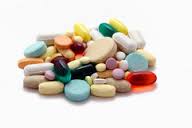 Recently, the Colorado Senate attempted to treat driving under the influence of marijuana like driving under the influence of alcohol with a .08% or greater blood alcohol content, as reported by 9news.com. The proposed marijuana blood-level limit that was voted on and failed was 5 nanograms of THC, or delta-9-tetrahydrocannabinol, which is the psychoactive ingredient in marijuana.
Recently, the Colorado Senate attempted to treat driving under the influence of marijuana like driving under the influence of alcohol with a .08% or greater blood alcohol content, as reported by 9news.com. The proposed marijuana blood-level limit that was voted on and failed was 5 nanograms of THC, or delta-9-tetrahydrocannabinol, which is the psychoactive ingredient in marijuana.
Those sponsoring the marijuana, (otherwise known as pot, bud, weed, grass, Mary Jane, MJ, among others), DUI bill argued that THC levels are reliable and they are a scientific indicator that shows if someone used marijuana recently and if they are under the influence for purposes of driving.
Opponents of the bill stated the THC levels do not gauge impairment because even though the psychoactive ingredient is not active and the person is no longer feeling the effects of ingesting marijuana, the chemical remains in the body for an extended period of time. The blood test will show a THC level indicating the subject at some point used pot; however, it will not determine the amount that was ingested, when it was used, or the concentration of THC in the product that was consumed. In addition, each person’s individual tolerance to marijuana is different and it is affected by usage.
In California, under Penal Code Section 23152(a), “It is unlawful for any person who is under the influence of…[a] drug, or under the combined influence of any alcoholic beverage and drug, to drive a vehicle.” Therefore, a person can be charged with drunk driving if law enforcement suspects the person is under the influence of marijuana at the time that they are driving a vehicle.
As the law stands now, the THC level is only one of the factors that is considered to determine if a person is under the influence. These cases are fact specific, looking into the driving pattern, the driver’s appearance, how he or she performed on the field sobriety tests, (or FST’s), and the chemical test result which shows the THC level in the blood. Because there is no hard and fast rules about marijuana impairment, marijuana drunk driving cases are hard for the prosecutor to prove.
Because these cases are so hard to prove, they are great cases to take to trial. Often, especially if there are no other drugs or alcohol in your system, these cases get dropped or the charges are reduced because the prosecutor does not want to take the risk of a not guilty verdict after trial.
There are many strong defenses in marijuana DUI cases. If you have been charged with drunk driving involving marijuana, you owe it to yourself to find an exclusively DUI defense firm that can aggressively fight your case.
The above blog article on marijuana driving under the influence cases is by no means all-inclusive and is not legal advice. Laws may change and may not apply to your case. For the latest information or to get legal advice, speak to a drunk driving attorney in your area.
Continue reading ›
 It’s common knowledge that driving under the influence of drugs is illegal in California. However, determining exactly what constitutes “driving under the influence of drugs” may come as a surprise. Vehicle Code § 23152(f) is the law that makes driving under the influence of drugs illegal. The law is about as clearly written as it can be: “It is unlawful for a person who is under the influence of any drug to drive a vehicle.”
It’s common knowledge that driving under the influence of drugs is illegal in California. However, determining exactly what constitutes “driving under the influence of drugs” may come as a surprise. Vehicle Code § 23152(f) is the law that makes driving under the influence of drugs illegal. The law is about as clearly written as it can be: “It is unlawful for a person who is under the influence of any drug to drive a vehicle.” San Diego DUI Lawyers Blog
San Diego DUI Lawyers Blog




 Recently, the Colorado Senate attempted to treat
Recently, the Colorado Senate attempted to treat  A La Jolla Boulevard accident, that occurred in August 2010, is being blamed on marijuana intoxication, according to
A La Jolla Boulevard accident, that occurred in August 2010, is being blamed on marijuana intoxication, according to